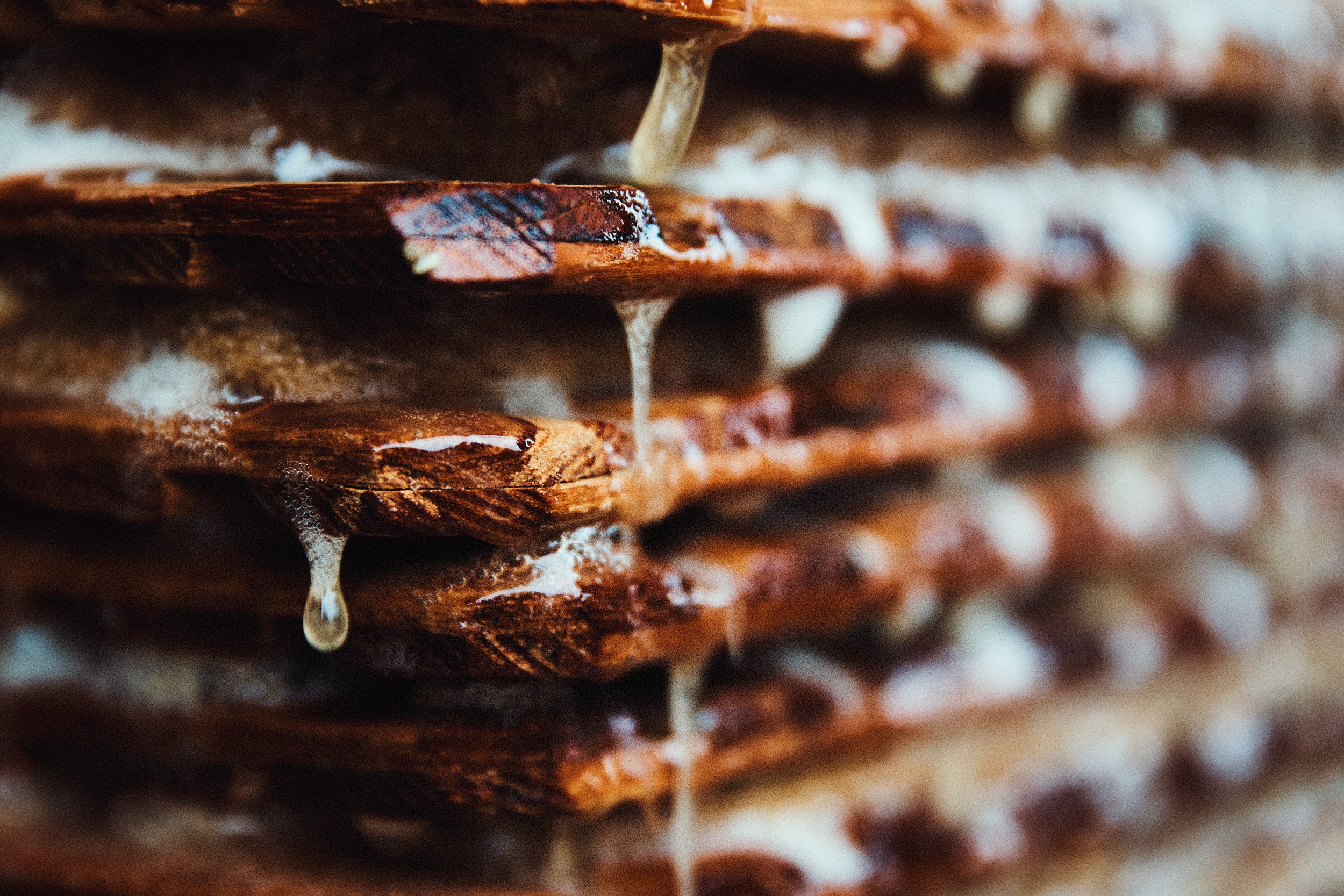How we make Cider & Wine
It all starts in the orchard.
No matter how much effort we put into our ciders, they will never surpass the potential of the fruit itself. That's why we partner with the finest orchards in Denmark. Similar to our cellar practices, our growers prioritize working harmoniously with nature, minimizing chemical intervention and prioritizing substances that align with our values.
Currently, we collaborate with Tvedemose, a sustainable farm that produces mushrooms, eggs, and apples. The egg production yields chicken manure used in mushroom cultivation, while the apple orchard benefits from the recycled mushroom compost. Just like the age-old chicken/egg conundrum, we may not know what came first, but we take pride in our partnership with Tvedemose.
The Fruit
At Æblerov, we work with two types of apples: cider and food apples.
Cider apples, originating from France and Britain, typically yield ciders associated with French/British traditions. These ciders are characterized by their lower acidity, bitterness, and sweetness. Conversely, food apples are Nordic varieties known for their reliance on acidity and aroma, resulting in lean, crisp, and acidic ciders that resemble wine more than traditional cider.
In the beginning of Æblerov we predominantly used the indeginous fruits as it was undiscovered but today we avoid rigid adherence to one approach. While we often favor one type over the other as the base of our ciders, we frequently blend both varieties to create more balanced ciders. We try to rely on our taste buds rather than preconceptions about right or wrong fruit. This is also why we dont shy away from using berries, grapes, quince, pears & hops.
Pressing, fermenting and cellarwork
Once we gather the apples, we press them and pour the juice into tanks to kickstart the natural fermentation process. Wild yeast is all around us, hanging out on the apple skins, in the press, and in our special house culture. We use different containers like steel, old barrels, plastic, and even amphora, depending on the apples and the style we're going for. Fermentation can take anywhere from 3 weeks to 3 months. After that, we let the fermented juice sit in closed tanks until it tastes just right for bottling.
Where does the bubbles come from?
Once it tastes just right, we bottle the cider and kick off the bottle fermentation process, also called méthode ancestrale or pet-nat. This means we bottle the cider with some sugar still inside, which creates those lovely bubbles we all enjoy.
After fermentation, there's yeast and sediment left in the bottles. Sometimes, we leave it there because it adds a creamy texture and interesting flavors. If we want a clear cider, we do disgorging. That means we turn the bottles upside down and gradually bring them upright while opening them. Can be seen Riiiiiight here. The pressure pushes out the sediment, leaving us with a clear and crisp cider. Cheers!
Subscribe
Subscribe





